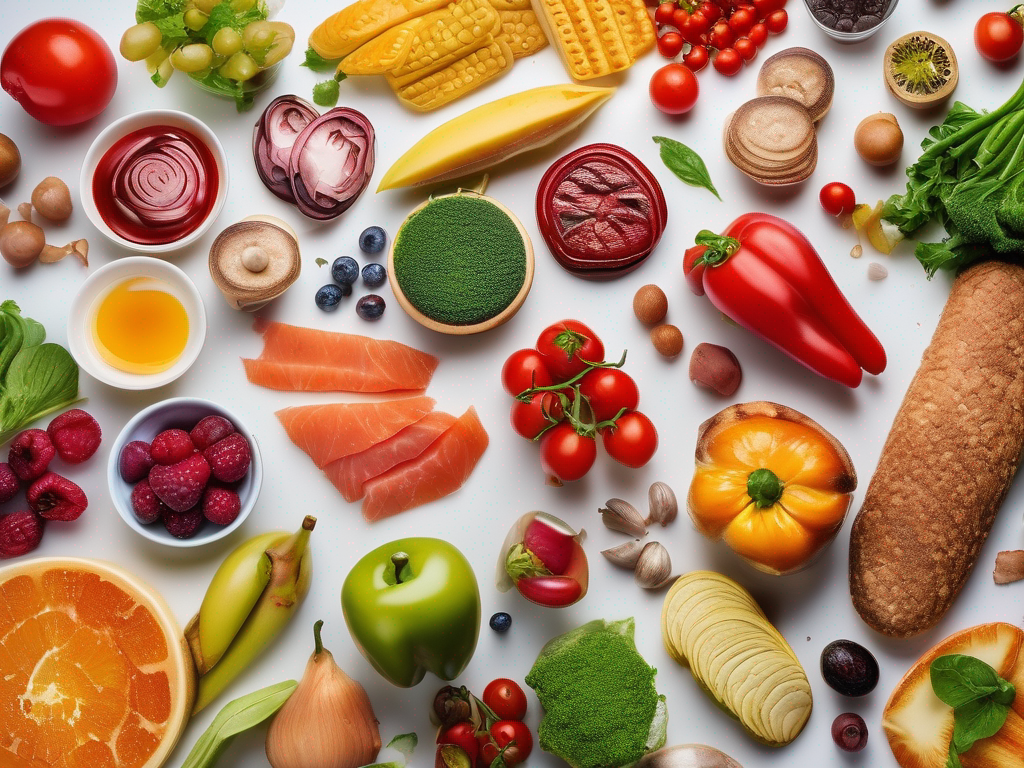
Safely Thaw and Reheat Pancakes Purchased Commercially Frozen
Get Your Free Food Safety Cheat Sheet
30 most common foods with instant answers. Print it and stick it on your fridge—completely free!
Safely Thaw and Reheat Pancakes Purchased Commercially Frozen
Pancakes are a beloved breakfast staple that can be enjoyed in various ways. Whether you prefer them topped with syrup, fruits, or nuts, pancakes are a versatile dish loved by many. When purchasing commercially frozen pancakes, it's essential to follow food safety guidelines to ensure they are properly thawed and reheated. In this blog post, we will explore the best practices for safely thawing and reheating commercially frozen pancakes.
Thawing Commercially Frozen Pancakes
When it comes to thawing commercially frozen pancakes, it's crucial to do so safely to prevent the growth of harmful bacteria. Here are some recommended methods for thawing frozen pancakes:
Refrigerator Thawing
- Place the frozen pancakes in the refrigerator.
- Allow the pancakes to thaw in the refrigerator overnight or for at least 8 hours.
- Once thawed, the pancakes can be reheated using your preferred method.
Cold Water Thawing
- Fill a large bowl with cold water.
- Place the sealed bag of frozen pancakes in the bowl of cold water.
- Change the water every 30 minutes until the pancakes are thawed.
- Once thawed, proceed with reheating the pancakes.
Microwave Thawing
- Use the defrost setting on your microwave to thaw the frozen pancakes.
- Follow the microwave's instructions for defrosting food to ensure even thawing.
- Check the pancakes periodically to prevent them from cooking during the thawing process.
Reheating Commercially Frozen Pancakes
After properly thawing the commercially frozen pancakes, it's essential to reheat them thoroughly to ensure they are safe to eat. Here are some safe methods for reheating frozen pancakes:
Oven Reheating
- Preheat the oven to 350°F (175°C).
- Place the thawed pancakes on a baking sheet.
- Cover the pancakes with aluminum foil to prevent them from drying out.
- Heat the pancakes in the oven for 10-15 minutes or until heated through.
Stovetop Reheating
- Heat a non-stick skillet or griddle over medium heat.
- Place the thawed pancakes on the skillet or griddle.
- Heat the pancakes for 2-3 minutes on each side or until heated through.
- Serve hot with your favorite toppings.
Microwave Reheating
- Place the thawed pancakes on a microwave-safe plate.
- Cover the pancakes with a damp paper towel to retain moisture.
- Microwave the pancakes on high for 30-60 seconds or until heated through.
- Let the pancakes sit for a minute before serving.
Safety Tips for Thawing and Reheating Pancakes
When handling commercially frozen pancakes, it's essential to follow these safety tips to prevent foodborne illnesses:
- Always thaw and reheat pancakes in the refrigerator, microwave, or on the stovetop to ensure even heating.
- Avoid thawing pancakes at room temperature, as this can lead to the growth of harmful bacteria.
- Check the internal temperature of reheated pancakes using a food thermometer to ensure they reach a safe temperature of 165°F (74°C).
- Do not refreeze previously frozen pancakes after they have been thawed and reheated.
By following these safety tips and guidelines, you can enjoy commercially frozen pancakes without compromising your health.
Conclusion
Properly thawing and reheating commercially frozen pancakes is essential to ensure they are safe to eat. Whether you choose to thaw them in the refrigerator, cold water, or microwave, it's important to follow food safety practices to prevent foodborne illnesses. When reheating pancakes, use methods such as the oven, stovetop, or microwave to ensure they are heated through. By following the tips and guidelines outlined in this blog post, you can enjoy delicious pancakes with peace of mind knowing they are safe and tasty.
Authoritative Food Safety References
These agencies and university labs inform every tip and health precaution we publish.
USDA FoodKeeper – Cold Storage Guidelines
Official refrigerator, freezer, and pantry timelines maintained by the U.S. Department of Agriculture.
Visit USDA FoodKeeperFDA Produce Safety Rule & Grower Guidance
Field-to-fridge handling practices that prevent contamination of fruits, vegetables, and leafy greens.
Visit FDA Produce SafetyCDC Foodborne Illness Prevention Hub
Surveillance-backed guidance on pathogens, symptoms, and steps to reduce foodborne illness risk.
Visit CDC Food SafetyUC Davis Postharvest Technology Center
University research detailing optimal storage atmospheres for produce after harvest.
Visit UC Davis PostharvestPenn State Extension – Home Food Preservation & Safety
Peer-reviewed extension bulletins on safe canning, chilling, and reheating practices.
Visit Penn State ExtensionGet Your Free Food Safety Cheat Sheet
30 most common foods with instant answers. Print it and stick it on your fridge—completely free! Want more? Upgrade to the complete guide with 70+ foods.
Scan your food directly and get instant safety info using our AI-powered camera feature.